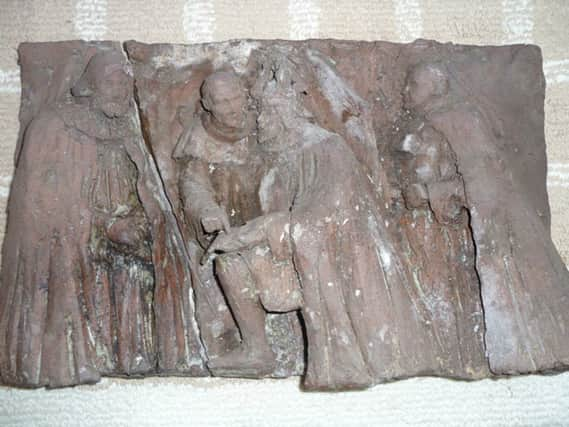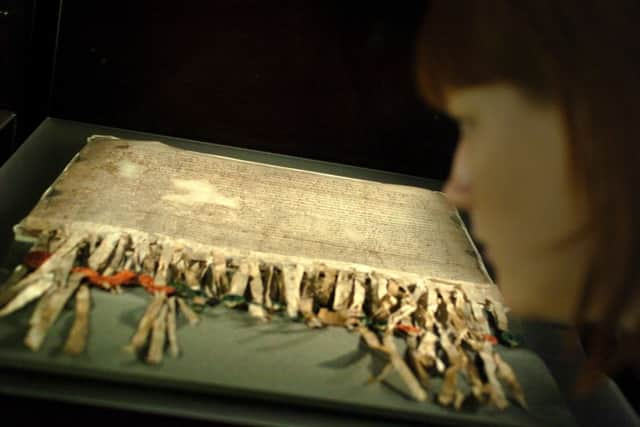‘Declaration of Arbroath’ plaque found in Easthaven


The carving was found close to an old post road in Easthaven, Angus, where pilgrims used to travel between the abbey in Arbroath and St Andrews.
The tiny community is now appealing for anyone with information to come forward to unravel its’ history.
Advertisement
Hide AdEasthaven was popular with travellers in the 16th and 17th Centuries and historic artefacts have previously been found there, including pilgrims’ brooches and a 12th Century coin.


That has led to a great degree of excitement over the latest find.
The carving, which appears to depict the declaration of Arbroath, was found during efforts to clean up and improve the village.
Easthaven resident Wendy Murray said the find was a “real mystery”.
She said: “Due to its location we know it has lain undisturbed for around 50 years.
“It is a real mystery and it was found because we are continuing our work in support of the Beautiful Scotland campaign and coastal village in bloom.
Advertisement
Hide Ad“We have been tackling areas that really haven’t been touched in many years and the area where the carving was found was just off an old walking path.
“It is fascinating and it looks like some kind of king, perhaps even Robert the Bruce, sat with a document in his hands.
“It looks like the monks are kneeling over it.
Advertisement
Hide Ad“The material is clay-type but there were also some bits of metal in there as well.
“We don’t want to clean it up just now for fear of damaging it which is why we may look at handing it to an expert.
“The area it was found in was a place where the fishermen kept a lot of their stuff.
“Most of it was simply rubbish but we really did strike gold when we got to the bottom of the pile.”
Easthaven is one of the earliest recorded fishing communities in Scotland, first mentioned in 1214.
Previous finds include historic coins, bronze and lead artefacts and a cannon ball which was thought to have been fired by one of Oliver Cromwell’s ships in 1651 in an attack on either Easthaven or the Earl of Panmure and his men who would have mounted a defence against the enemy.
Advertisement
Hide AdWendy added: “The fishermen in Easthaven were renowned for collecting items that had been left behind and we have seen lots of historic artefacts found in the village.
“It was an important place for travellers during the 16th and 17th Century and there have been historic coins found here going back as far as the 12th Century.
Advertisement
Hide Ad“The question is, ‘Is this something historic that has been left?’
“A resident was also aware that the fishermen were on very friendly terms with one of the earls at Panmure House and used to give them old artefacts for safe keeping.
“So did it come from Panmure House? We just don’t know. We have no idea.”
Anyone with information can contact Wendy through the village website at www.easthavenangus.com.
FOLLOW US
SCOTSMAN TABLET AND MOBILE APPS